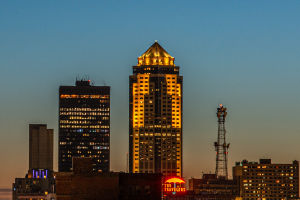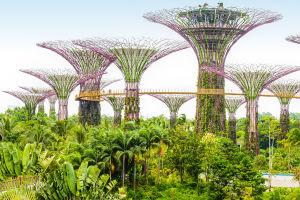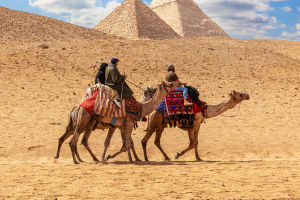Have you ever stood somewhere so quiet and vast that you couldn't tell where the land ended and the sky began? That's what it feels like to step onto the Uyuni Salt Flats in Bolivia.
But visiting this surreal wonder isn't just about showing up and snapping photos—timing, prep, and smart travel decisions make all the difference between an unforgettable adventure and a frustrating trip. Let's dig into what really matters when planning a visit to the world's largest salt flat.
What Makes Uyuni Truly Unique?
The Salar de Uyuni stretches over 4,000 square miles, making it the largest salt flat on Earth. But what grabs most travelers'attention isn't just the scale—it's the perfect mirror effect that happens during the rainy season. When a thin layer of water covers the salt crust, the sky reflects flawlessly on the surface. It's like walking in the clouds.
This natural mirror attracts photographers, honeymooners, backpackers, and even filmmakers. But many travelers miss the key moments to see the flat at its best.
Best Time to Visit (And Why It Matters)
1. For the Mirror Effect:
Travel between January and March. This is Uyuni's rainy season. The flats turn into a giant mirror after light rainfall—but too much rain can flood the area and limit access to key landmarks like the Isla Incahuasi. It's a delicate balance.
2. For Clear Hexagon Patterns:
Visit from April to October, the dry season. The salt dries into geometric crusts that look like tiles stretching to the horizon. No mirror, but amazing contrast under the bright sun.
3. For Comfortable Weather:
Remember, this is a high-altitude desert. Daytime temperatures are manageable (around 50–70°F / 10–21°C), but nights can drop below freezing—even in summer. Always pack layers.
How to Get There (And What's Worth the Cost)
Uyuni isn't hard to reach—but it takes effort. The easiest option is to fly from La Paz to Uyuni, which takes about 1 hour. Round-trip tickets usually cost around $120–$150 USD. There are also overnight buses from La Paz (10-12 hours, $25–$40), but they can be bumpy and cold.
Once in Uyuni, you'll need to book a guided tour. Most people choose one of the following:
1. One-Day Tour (Budget-Friendly)
Cost: $20–$30 USD/person
Covers the salt flats, Incahuasi Island, and the train cemetery. Great if you're short on time. But you'll miss the sunset and stargazing, which are highlights.
2. Three-Day Tour (Most Popular)
Cost: $120–$180 USD/person
Includes volcanoes, lagoons, geysers, hot springs, and wildlife watching including flamingos at a distance. Accommodations are basic, but you'll see far more than just the flats.
3. Private Tour (Comfort Option)
Cost: $300–$500+ USD
Ideal if you want to control your timing for photos or need more comfort. Great for photographers.
Photography Tips from the Pros
Want that jaw-dropping mirror photo? Here's what seasoned travelers and photographers recommend:
1. Visit early or late in the day.
Sunrise and sunset offer the best lighting—and fewer crowds. Midday light is harsh and flattens the reflection.
2. Wear bright colors.
The salt acts like a blank canvas. Bright clothes or props (umbrellas, scarves, toys) pop against the background.
3. Use perspective tricks.
Flat, open land lets you get creative. With the right angle, you can "step" on a friend's head or appear to hold a bus in your palm.
4. Bring protection for your gear.
Salt is corrosive. Use ziplock bags or waterproof covers to protect your camera and phone.
Tips You Won't Hear Everywhere
1. Don't skip altitude prep.
Uyuni is over 12,000 feet (3,650 meters) above sea level. If you're flying in from low elevation, spend a day in La Paz or Potosí first to acclimatize.
2. Carry cash.
ATMs in Uyuni are unreliable. Tours, snacks, and souvenirs are often cash-only.
3. Stay an extra night.
Don't rush your trip. Staying an extra night in Uyuni before or after your tour helps you avoid stress, catch sunrise/sunset, and adjust to altitude.
4. Choose eco-conscious operators.
Some tour providers dump waste in the desert or damage the salt flats with reckless driving. Look for operators certified by Bolivia's tourism bureau or ones with positive conservation reviews.
Is It Worth It?
Absolutely. But not because it's Instagram-famous. Salar de Uyuni makes you feel like you've left Earth. It's humbling, peaceful, and strangely emotional. What makes it even more powerful is the silence—no engine noise, no wind, just you and a planet made of salt and sky.
Have you ever seen a place that made you question what's real and what's reflection? If Uyuni is on your list—or even if it wasn't before—what would you want to experience most: the endless mirror, the flamingo-filled lagoons, or the deep silence of the desert? Let me know how you'd imagine your perfect day here.


